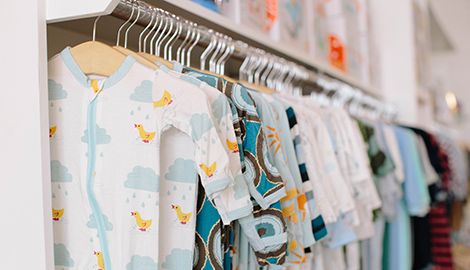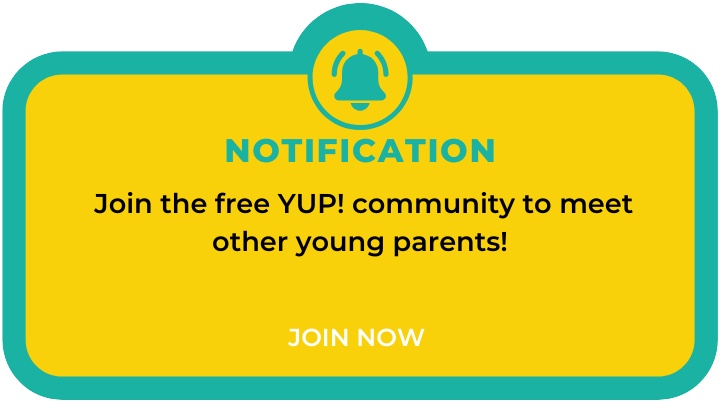The Basics: Preparing for Your Baby

The third trimester of pregnancy (months 7-9) is a good time to prepare for the baby’s arrival. Below are suggestions of essential items you might need and things to do to feel better prepared. Try not to stress, and make sure to ask for help! Partners, family members, and friends will likely be happy to help you.
Get Vaccinated
Get the shots you will need to care for your baby, and make sure other caregivers have them, too. It is recommended that pregnant women get the flu and Tdap vaccines (Tetanus, Diphtheria, Pertussis) before the baby arrives since these illnesses can be life-threatening to babies. Because of this, other caregivers should also get these vaccines at least 2 weeks before coming into contact with the baby. Talk with your doctor or nurse about getting these and other vaccines you might need before the baby arrives.
Find a Doctor for Baby (Pediatrician)
Only a few days after you come home from the hospital, your baby will need to see a pediatrician for a check-up. Although you might have to wait until you deliver your baby to make the appointment (usually while you’re in the hospital), you might want to pick a pediatrician before then. You can search online for pediatricians in your area or ask family, friends, or your doctor for suggestions. Make sure the pediatrician is covered by your medical insurance and that the office is close enough to your home.
Learn About Parenting
If parenting seems like a daunting task filled with unknowns, don’t worry – there are many resources that can help. Taking parenting classes (and including other caregivers, if possible) might be a good first step. Many hospitals offer classes, or you could ask your doctor or other mothers for suggestions. Classes on baby care, breastfeeding, and infant CPR might be useful to add to your list. For more information, parenting books and articles can help. The Centers for Disease Control and Prevention (CDC) offers a two-page document with tips on parenting and child development for babies that can help you get started (see Helpful Resources, below).
Look into Parental Leave
After giving birth, you’ll need time to take care of your baby, which can be a full-time job. This might require you and/or the other parent to put your jobs or other commitments on hold until you feel ready to start them again. Look into maternity leave options through your employer and your state. If you have a partner, ask whether they have paternity leave options. You might appreciate this extra pair of hands during postpartum recovery, and your partner might enjoy having dedicated time for bonding with the baby.
Think About Childcare
After the baby is a few months old and when your leave comes to an end, you might have to return to school or work. It’s never too early to think about childcare options, which can include help from family or friends, or daycare. If you choose to use a daycare facility, start your research early. Make sure to ask about minimum age limits since some facilities do not take care of children younger than 1-2 years old.
Gather the Items You’ll Need for the Baby
The list below includes items that you might need more immediately when the baby arrives. Setting up a baby registry and having a baby shower can be great ways to gather some of these items. You can also look into getting some of the items second-hand. For items such as cribs, strollers, changing tables, car seats, and bottles, make sure to inspect them well to make sure they are not broken or unstable or appear unsafe in any way. You can also check the Consumer Product Safety Commission website to make sure items are up to date on safety standards.
- Car seat. This item should be top of your list. By law, you cannot leave the hospital with your baby unless you have installed an infant car seat. If you need help installing the seat in the car, visit your local police or fire department.
- Stroller. The baby will need a safe space in which to be transported when not in a car. A stroller is a good option, especially one designed for carrying infants. (Some strollers are designed for children with good neck control, which a baby won’t have for a few months).
- Crib or bassinet. The baby will need a safe place to sleep during the day and night. A bassinet or a crib is a good option, and it is recommended that they sleep in the same room with you the first few months. Make sure that the mattress is firm and flat and that there are no loose items in or near the crib or bassinet when the baby is sleeping in it (for instance, blankets, pillows, bumpers, or stuffed animals).
- Clothing and accessories. The following clothing items will come in handy more immediately: onesies (short- and long-sleeve), one-piece pajamas, no-scratch mittens, socks, and caps. If it is cold where you live when the baby arrives, make sure to also have some winter clothes ready (such as jackets and sweaters). Try to purchase only a few newborn-sized clothes since babies can grow out of them quickly. Because babies’ skin can be sensitive, make sure to wash all clothes before using them, and try to use a laundry detergent labeled for babies.
- Swaddles and blankets. Swaddling, or wrapping up your baby, can be helpful to calm newborns (0-3 months old) and help them (and you!) sleep. You can use lightweight, smaller blankets to do this or you can look into getting swaddles more specifically. Ask your doctor or nurse to show you how to do this properly when you’re in the hospital. You also might want to get a larger, firm blanket to put on the floor to help baby with “tummy time” exercises. Your baby’s doctor might recommend these exercises help their neck get stronger over time.
- Feeding supplies. Bottles and a nursing chair can be useful for feeding babies on either breast milk or formula. Mothers who plan to breastfeed might also consider nipple cream and a nursing pillow, which you can use to hold the baby up more easily and give your arms a rest!
- Pumping supplies (if breastfeeding). To pump breast milk, you will need an electric or manual pump and breast milk storage bags. Some insurance companies cover the cost of an electric pump, so make sure to check with your insurance.
- Changing table or pad. A changing table or portable changing pad will be important for cleaning up diapers and creating as little mess as possible in your home. You might want to consider also getting a compact changing pad for the baby’s diaper bag so that you can change diapers on-the-go.
- Diapers. Avoid buying in bulk right now. Instead, get smaller packs from different brands to try out. You might find that your baby fits better into certain diapers or that their skin prefers certain brands. Don’t forget plenty of wipes and a diaper rash cream.
- Bath time supplies. Until baby’s umbilical cord falls off (1-3 weeks), the baby will get sponge baths. For this, you will need a soft handcloth and soap labeled for babies. Once the baby can take baths, you might need a bathtub for babies and smaller towels to dry baby off.
- Medical kit. Useful items that you might need more immediately include baby nail clippers, a bulb syringe (for removing fluids from the baby’s nose and mouth), a baby thermometer, and infant acetaminophen (such as infant Tylenol) for fevers.
Visit The Bump website, below, for a list of other items to consider and a sample baby registry checklist.
Rest!
Giving birth and taking care of baby after are energy-intensive tasks with little guarantee of sleep. To best prepare, get as much rest as possible now! This can help you feel physically and mentally rested and better prepared for the big day, and beyond.
Helpful Resources
Positive Parenting Tips for Healthy Child Development (CDC): This website offers parenting tips for infants (0-1 year of age) that parents can print or read online. This two-page document includes tips about the baby’s development, safety, and health more generally. Your Ultimate Checklist of Baby Essentials (The Bump): This website provides a detailed list of essentials for the baby’s arrival, including counts of how many of each item you might need. It also includes a baby registry checklist that can help you with building a registry online.
